MOJ
eISSN: 2574-9935


Review Article Volume 4 Issue 1
1Member of the Scientific Committee of the Revista Observatorio del Deporte (Los Lagos University, Santiago, Chile).
2International Scientific Reviewer of the Revista Con–Ciencias del Deporte (UNELLEZ, Barinas, Venezuela)
Correspondence: Nelson Kautzner Marques Junior, Member of the Scientific Committee of the Revista Observatorio del Deporte (Los Lagos University, Santiago, Chile,
Received: December 31, 2019 | Published: February 18, 2020
Citation: Junior NKM. Specific periodization for the volleyball: the importance of the residual training effects.MOJ Sports Med. 2020;4(1):4-11. DOI: 10.15406/mojsm.2020.04.00086
Sports periodization began in Ancient Greece with the objective of prepare the athletes for the Olympic Games. The studies on the sports periodization were practiced by Russian researchers after the Russian Revolution of 1917. Therefore, Russian researchers developed several periodization and the researchers from other countries elaborated others periodization models. However, most periodization models were developed in individual sports. This is a problem for the team sports coach to structure the training. The volleyball has its characteristics and it is necessary to elaborate a periodization model according to the needs of this sport. In 2011, Marques Junior wrote the first article about the specific periodization for the volleyball with the objective to end this problem. Other articles were written about the specific periodization for the volleyball with the objective of build a theory of this model. How to use the residual training effects in the specific periodization for the volleyball? The specific periodization for the volleyball literature does not have this information. Then, the objective of the review was to explain how to use the residual training effects during the elaboration of the specific periodization for the volleyball. The review taught how the coach should organize the ball training and physical training. The content of the residual training effects is of the ATR block periodization was inserted in the specific periodization for the volleyball. The coach that knows about the residual training effects has a parameter of the duration of the physiological adaptation of the physical training. In conclusion, the theory of the specific periodization for the volleyball has been improved during the years with the objective of the model solving the needs of the volleyball players.
Keywords: volleyball, periodization, training, sports, residual effects
Sports periodization began in Ancient Greece with the objective of prepare the athletes for the Olympic Games.1,2 The studies on the sports periodization were practiced by Russian researchers after the Russian Revolution of 1917.3,4 Therefore, Russian researchers developed several periodization5–7 and the researchers from other countries elaborated others periodization models.8–10 However, most periodization models were developed in individual sports.11–13 This is a problem for the team sports coach to structure the training.14,15
The volleyball has its characteristics and it is necessary to elaborate a periodization model according to the needs of this sport. In 2011, Marques Junior16 wrote the first article about the specific periodization for the volleyball with the objective to end this problem. Other articles were written about the specific periodization for the volleyball with the objective of build a theory of this model.17–19 Specific periodization for the volleyball was elaborated with the content of six types of periodization (traditional periodization of Matveev, block periodization of Verkhoshanski, structural scheme of high intensity of load of Tschiene, tactical periodization of Vítor Frade, non–linear periodization of the Americans, and periodization of selective loads of Gomes) and of six physical education disciplines (volleyball, sports training, biomechanics, exercise physiology, motor learning, and kinanthropometry) because periodization models determined high performance of the volleyball players and the contents of the physical education disciplines were important for structure this model.20
However, some sport researchers informed that the residual training effects are physiological and biochemical adaptations of long–term training that the athlete does not lose the same stopping to train during a few weeks.21,22 The ATR block periodization uses in each block the residual training effects of how a parameter of the physiological adaptation performed of each type of training practiced during the accumulation block, the transformation block and the realization block.23,24 This content is important for the training of the specific periodization for the volleyball.
How to use the residual training effects in the specific periodization for the volleyball?
The specific periodization for the volleyball literature does not have this information.25–28 Then, the objective of the review was to explain how to use the residual training effects during the elaboration of the specific periodization for the volleyball.
Content of the ball training and of the physical training: the use of the residual training effects
Ball training in the specific periodization for the volleyball the coach determines the training load subjectively based in three interconnected contents (sequence of the volleyball skill defined, volleyball skill effort, and level of volleyball skill injury) before of the athletes practiced the technical training and the game situation training and the session the coach elaborates according to the objective of training.26 Details about these three interconnected contents read Marques Junior.25 Therefore, these three interconnected contents are a parameter for the volleyball coach to structure the ball session load subjectively. But the game training does not use the effort and the injury in the session because this session the control of these contents is difficult.
Based in the interconnected contents of the volleyball effort and of the volleyball injury the author of this periodization elaborated the ball training classification graphic with the objective of facilitating the volleyball coach in structuring the training load subjectively before of the technical training and the game situation training, but always this session is elaborate according to the objective of the training. Figure 1 presents this graphic.
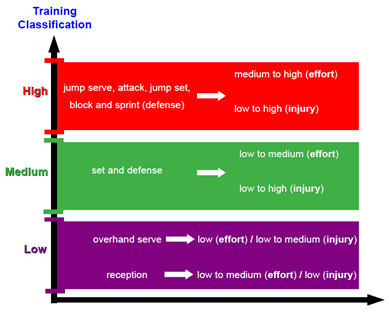
Figure 1 Ball training classification for the coach elaborates on the technical training and the game situation training (illustration elaborated by the author).
How to use the ball training classification graphic (is the graphic 1)?
For example, a volleyball coach has the objective to improving the jump serve of a high–performance volleyball team. This volleyball team practiced 2 hours (equal the 120 minutes) of training with the blocked practice of the motor learning. This training structure the coach elaborated before of the volleyball players practiced the session. After the warm–up, the coach elaborated the jump serve training for 30 minutes, this session has high ball training classification because figure 1 presented high effort and high level of injury. The first exercise was practiced in technical training. The second exercise was with the game situation training, the volleyball players practiced the jump serve and three athletes practiced the reception. Therefore, a group of volleyball players practiced during 30 minutes a high ball training classification at the moment of the jump serve and other group practiced the jump serve and the reception that had a low ball training classification.
Continuing the example, the third exercise was with the technical training during 15 minutes through active rest to cause a faster recovery of the jump serve training. Active rest is work indicated in the sports training literature.29,30 In double, the players practiced the reception during the active rest because this exercise is of low ball training classification. The fourth exercise was equal to the exercise two, the players practiced jump serve three athletes practiced the reception, this exercise had a duration of 15 minutes. The last exercise was the game training for 30 minutes with the objective of the coach to check the jump serve performance in the match.
Empirically this session can be classified how a medium training because this session has three high ball training classification of the jump serve and three low ball training classification of the reception. Game training has no classification. Figure 2 illustrates this ball training.
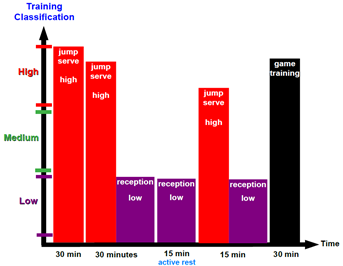
Figure 2 Subjective training load before of the athletes practiced the session (illustration elaborated by the author).
After the ball training, the coach shows for the volleyball players the faces scale adapted of Foster to determining the intensity31 and after the coach determines the training load with mathematical calculations.18,19 Other scale that the coach shows for the athletes the faces scale of the muscle soreness to determine the fatigue.32
How is organized the physical training in the specific periodization for the volleyball?
The physical training of the specific periodization for the volleyball is necessary the knowledge about the physical profile of the volleyball match (Note: physical profile is formed by rally time, the match time, the rest time, the skilled effort, the quantity of skills, and others) and the physiology of the volleyball match (Note: physiology is formed by energy metabolism, heart rate, oxygen consumption, cardiorespiratory response, and others).33,34 This content is important to detecting the conditioning motor capacity of the volleyball for the physical trainer prescribes during the physical training.
Volleyball is a sport with effort and rest, therefore it is an intermittent game.35,36 The rally is the moment of the match that the volleyball players practice the skills (serve, reception, set, attack, block, and defense) during 1 to 10 seconds.34 The rest of the volleyball match is when the ball touches the court and has a duration of 11 to 30 seconds.17 The rally–to–rest ratio during the volleyball match is approximate of 1:3 (Note: 1 is the rally and 3 is the rest), enough time to recover the players of an anaerobic effort.37,38 The rally is in high velocity and short duration, then anaerobic alactic metabolism is predominant, but during the rest, the aerobic metabolism is predominant.39 The volleyball player during the rally practices actions with an emphasis in the explosive strength and/or in the explosive resistance strength.40,41 The most actions of the volleyball match are the jump skills42, but the jump skills and the high–velocity defensive displacement are the greatest volleyball effort.43 The distance covered during the volleyball match is short, between 1 to 10 meters.25 The duration of a volleyball match is of 1 hour to 2 hours and 30 minutes and of the beach volleyball is of 20 minutes to 2 hours.17
Based on volleyball efforts explained in the previous paragraph, several researches determined the conditioning motor capacities for the physical trainer prescribes in the physical training, figure 3.34,44–47
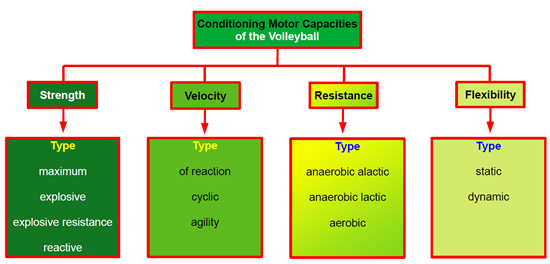
Figure 3 Conditioning motor capacities for the volleyball physical training (illustration elaborated by the author).
Some researchers determined the strength as the most important conditioning motor capacities of the sport performance because the improvement of the strength causes an increase in the velocity, in the resistance and the flexibility.41,48 Second Arruda and Hespanhol49 and Verkhoshanski,50 explosive resistance strength and reactive strength deserve more attention in the volleyball physical training because they are the most required conditioning motor capacities during the volleyball match. The explosive resistance strength and the reactive strength the volleyball player can exercise with ball training, with the anaerobic resistance training and with the velocity.44,51–55 Therefore, the strength training in the specific periodization for the volleyball is the most important session of the physical training of this model. Figure 4 shows the degree of importance of the conditioning motor capacities for the physical trainer prescribes in the session of the specific periodization for the volleyball.

Figure 4 Degree of importance (DI) of the conditioning motor capacities in the specific periodization for the volleyball (illustration elaborated by the author).
The physical trainer can prescribe the physical training with the ball training or only physical training. Therefore, when the athlete practices only the physical training is equal the traditional periodization of Matveev56 or equal the others models that were used for the author elaborated the specific periodization for the volleyball how the block periodization of Verkhoshanski57, the non–linear periodization58, and the structural scheme of high–intensity loads of Tschiene59. However, the specific periodization for the volleyball determined that the ball training is the most important training of this model and the physical training should be practiced with ball during the technical training, the game situation training and the game training through of the intermittent training of maximum intensity of Cometti.26 Details about the Cometti training read Marques Junior25 and about the type of physical training (plyometric training, bodybuilding, and others) read Marques Junior17.
Marques Junior60 elaborated the approximate evolution time of some motor capacities. In the ATR block periodization, Issurin23,24 recommended the knowledge about the residual training effects of some motor capacities. Therefore, the evolution time is a parameter for the coach structure the periodization about the moment of improvement of the motor capacity that will be trained and the residual training effects the coach has a parameter of the duration of the physiological adaptation in the volleyball player. Table 1 presents the evolution time and residual training effects.
Motor capacity |
Training |
Evolution time |
Residual training |
effects |
|||
maximum strength |
bodybuilding |
4 to 5 months |
30±5 days (high residual training effects) |
aerobic |
cyclic (running, swimming and others) |
15 days to 2 months |
30±5 days (high) |
explosive resistance strength |
bodybuilding |
4 to 5 months |
15±5 days (medium) |
anaerobic lactic |
cyclic (running, swimming and others) |
1 month and 14 days to 3 months |
18±4 days (medium) |
explosive strength |
bodybuilding |
4 to 5 months |
5±3 days (low) |
reactive strength |
plyometric (lower limb) |
2 to 6 months (vertical jump) |
5±3 days (low) |
anaerobic alactic |
cyclic (running, swimming and others) |
1 month and 14 days to 3 months |
5±3 days (low) |
flexibility |
stretching |
2 to 3 months |
did not inform |
technical and tactical |
ball |
9 days to 1 month |
did not inform |
Table 1 Content to organizes the training
How to use contents of table 1 in the training?
For example, a coach prescribes the fartlek and the interval training with predominance in the aerobic metabolism. This training occurred in the training period for 2 months because Marques Junior60 informed that 2 months is the evolution time of the aerobic conditioning. The objective of training was to increasing the maximum oxygen uptake (VO2max) for the volleyball player has a better recovery after the rally effort.61 After the 2 months, the coach prescribed the training with an emphasis on the strength, but this occurred during the competitive period. Based in Issurin23,24, the aerobic training adaptations remain by 30±5 days, aerobic adaptations have high residual training effects. Then, the motive of the end of the aerobic training for 1 month is because of the high residual training effects. After this period, the coach prescribed the interval training with an emphasis on the anaerobic lactic metabolism because this training improves the VO2max and the strength training because the anaerobic lactic training does not interfere with the physiological adaptation of the strength training.63 Figure 5 illustrates this explanation.
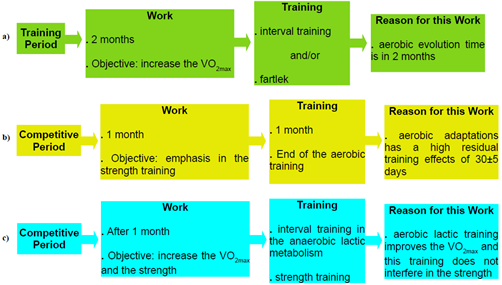
Figure 5 Structure of the session with the content to organizes the training of table 1 (illustration elaborated by the author).
Therefore, the content of the physical training of the ATR block periodization was inserted in the specific periodization for the volleyball. In 2018 Marques Junior20 showed the contents of other models used in the specific periodization for the volleyball.
How can the coach determine the physical training load before of the session?
Marques Junior25 recommended the use of the faces scale of the subjective perception of effort adapted of Foster to the coach to determine the intensity after of occur the physical training with the objective of has a parameter about the effort level of the session. However, in the faces scale adapted of Foster the descriptor is rest, light, medium and strong.31 Then, to facilitate the coach for determining the intensity of the physical training and the load training of the ball training with single nomenclature after of the session, the author of this article recommended renaming the intensities of the faces scale adapted of Foster. Then, the descriptor is called in the new scale of effort, rest rating continued, 1 to 3 rating changed its name to low, 4 to 7 rating continued medium, and 8 to 10 rating changed its name to high. Figure 6 illustrates these explanations.
Therefore, unified the name of the training load of the physical training and the ball training for the coach elaborate before of the session.
For example, the same session of figure 2 with the physical training was elaborate by the coach before of the session. The objective of the physical training was to increasing the maximum strength with bodybuilding.64 The first exercise was squat and after the players practiced the jump serve. The squat had a load of 100 kilograms (kg) or more, then the coach determined with the faces scale adapted of Foster that the squat exercise had 10 ratings and this is high subjective intensity. The squat exercise and the jump serve had a duration of 30 minutes. The training load of the volleyball skills the coach determined in figure 2. The second exercise the players practiced the bench press with 150 kg or more and after they practiced the jump serve and three athletes practiced the reception. The coach determined with the same procedure the intensity of the first exercise, he used the faces scale adapted of Foster and determined 8 ratings of the bench press and this is high subjective intensity. The bench press and after the jump serve and the reception had a duration of 30 minutes.
Continuing the example, the third exercise the players practiced the lunge with a light load of 15 kg because this work was of active rest. After this exercise, the volleyball players practiced the reception with the ball pass of a player for the other. The coach determined a 3 rating of the lunge and this is low subjective intensity. The third exercise had a duration of 15 minutes. The fourth exercise was equal to the exercise two, the players practiced the bench press and had the same load of exercise two, after this work the athletes practiced the jump serve and three players practiced the reception. The coach determined a 10 rating of the squat and this is high subjective intensity. This work had a duration of 15 minutes. The last exercise was the game training of 30 minutes.
The ball training had the same classification of figure 2, was a medium training. But the physical training, the first exercise was high subjective intensity, the second exercise was high subjective intensity, the third exercise was low subjective intensity, and the fourth exercise was high subjective intensity. Empirically the physical training load had a classification of high training because this session has three high physical training and one low physical training. Therefore, this session had a medium ball training and high physical training. Figure 7 illustrates this training.
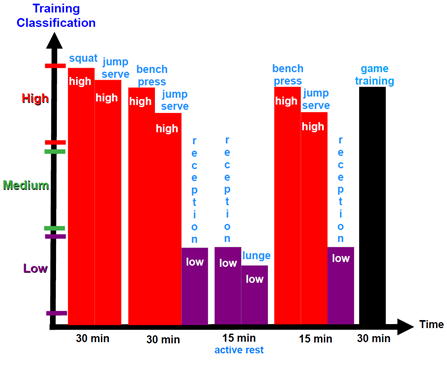
Figure 7 Subjective training load before of the athletes practiced the physical training and the ball training (illustration elaborated by the author).
After of the training of figure 7, the coach shows for the volleyball players the faces scale adapted to Foster for determining the intensity31 and after the coach determines the training load with mathematical calculations.18,19 Other scale that the coach shows for the athletes the faces scale of the muscle soreness to determine the fatigue.32
The review article taught how the coach can determine the subjective training load before of the ball training and the physical training. Other important content that was inserted in the specific periodization for the volleyball was the residual training effects of the ATR block periodization with the objective of guide the physical training. In conclusion, the theory of the specific periodization for the volleyball has been improved during the years with the objective of the model solving the needs of the volleyball players.
The author thanks the MOJ Sports Medicine invitation to write an article.
The author declares that there are no conflicts of interest.

©2020 Junior, et al. This is an open access article distributed under the terms of the, which permits unrestricted use, distribution, and build upon your work non-commercially.